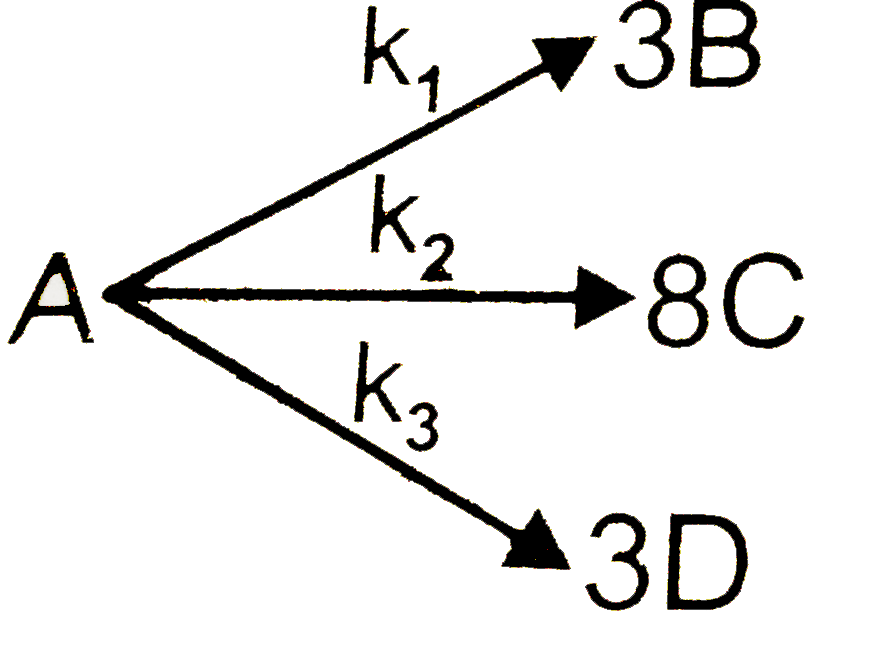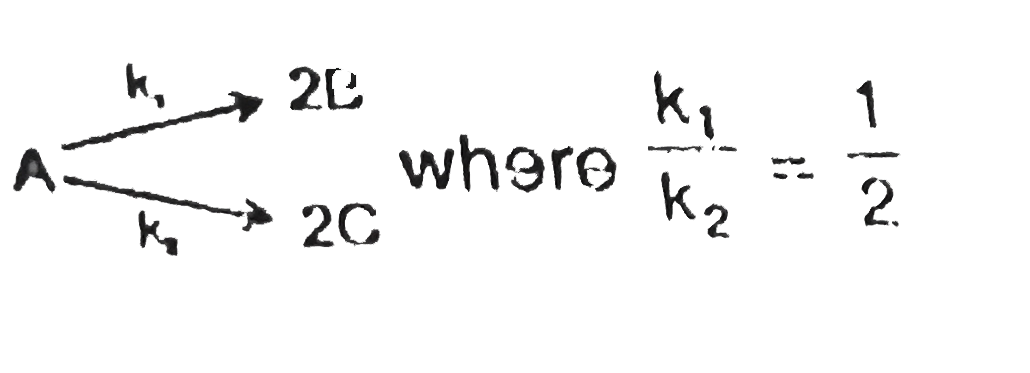 , At time t=0, intial mole of A is 1.
, At time t=0, intial mole of A is 1.
Overall half time of the reaction is 15 days. Then calculate the number of mole of C after 45 days if the raio of k1:k2:k3 is 4:2:1
The correct Answer is:2
Topper's Solved these Questions
Similar Questions
Calculate the number of moles of Sn2+ ion oxidise by 1 mole of K2Cr2O7 in acidic medium.
View Solution0.1 mole of N2O4(g) was sealed in a tude under one atmospheric conditions at 25∘C Calculate the number of moles of NO2(g) preesent , if the equilibrium N2O4(g)⇔2NO2(g)(KP=0.14) is reached after some time :
View Solution
Knowledge Check
- Question 1 - Select One
1.1 mole of A mixed with 2.2 mole of B and the mixture is kept in a 1 litre at the equilibrium 0.2 mole of C is formed, then the value of Kc will be:
A0.005B0.001C0.01D0.0001 - Question 2 - Select One
The number of moles of K2Cr2O7 reduced by 1mol of Sn2+ ions is
A13B32C52D65 - Question 3 - Select One
For the reversible reaction : AoK1⇐⇒K2B,k1=0.02min"^(-1) and k2=0.03−1min . The reaction is stated with A only .If the half life of such reaction is defined as the time in which half of the equilibrium amount of B is formed , then , what is the half life of reaction ?
A34.65 minB23.10 minC13.86 minDInfinite
In a vessel of 5L,26 moles of A and 4 moles of B were placed. At equilibrium 1 mole of C was present. The KC for the reaction :
A+2B⇔C isView SolutionNumber of moles of K2Cr2O7 that can be reduced by 1 mole of Sn2+ ions is :
View SolutionIn a vessel of 5L,26 moles of A and 4 moles of B were placed. At equilibrium 1 mole of C was present. The KC for the reaction :
A+2b⇔C isView SolutionFor a hypotherical elementary reaction
 where k1k2=12
where k1k2=12
Initailly only 2 moles of A are present.
Number of moles of B are:View SolutionFor a hypotherical elementary reaction
 where k1k2=12
where k1k2=12
Initailly only 2 moles of A are present.
The sum of mole of (B) are ( C) is :View Solution

